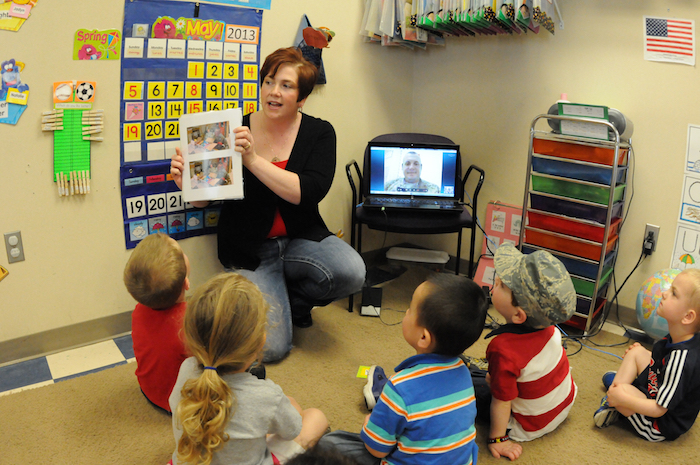
U.S. Air National Guard photo by SMSgt. David H. Lipp/Released, courtesy Wikipedia Commons.
“There’s nothing like the parent co-ops to really educate parents and to support parents,” said Diane Gonzalez, assistant director of San Marcos Parent-Child Workshop, one of four cooperative preschools on the South Coast.
All four parent-child workshop programs — Lou Grant, Starr King, the Oaks and San Marcos — are part of Santa Barbara City College’s continuing education program. Each serves as a parent education program with a preschool program for 2- to-5 year-olds as a laboratory.
“It’s a great environment,” said Gonzalez, who was also a parent at Starr King. “I really found it such a supportive environment and so important to my parenting. … It’s what got me into child care and working with children, but also with parents, I found it such an incredibly supportive experience, and I don’t think I would have been the parent I was if I hadn’t been to co-ops.”
Costs are low — ranging from about $25 to $125 a month, depending on the school and how many days a week a child attends — but parental participation requirements are high. Parents must participate in the workshops at least one day a week and attend a weekly evening class in child growth and development and parenting skills.
“It’s not the kind of program that meets everybody’s needs,” said Bea Hamlin, director of the San Marcos Parent-Child Workshop, and a former co-op parent.
“I don’t think any school exists that 100 percent meets everybody’s needs. No matter how much you like it; it just doesn’t work that way.”
But for the families that can make it work, co-ops provide great parent education, as well as the foundation for many lifelong friendships.
“We’re really a family here,” said Gonzalez. “We work together and then we fund raise and we eat together.
“It really does become a very close-knit group of people, more than you’re going to find at a regular school.”
